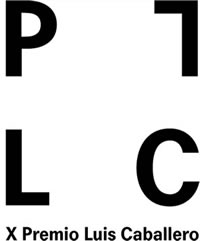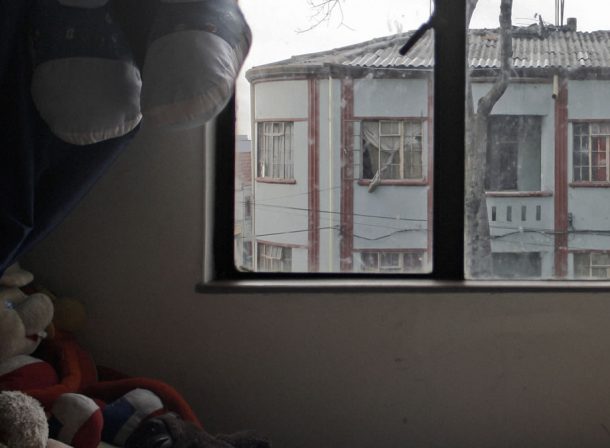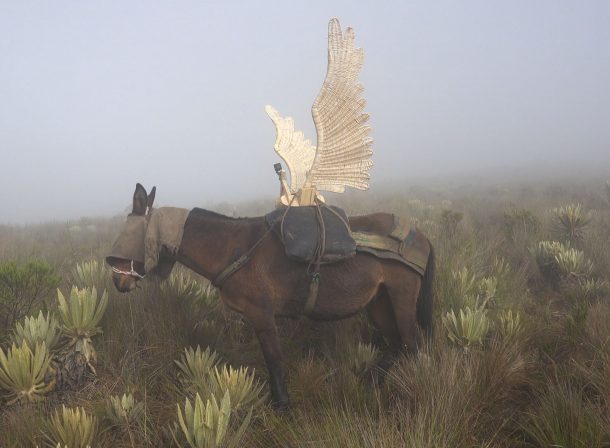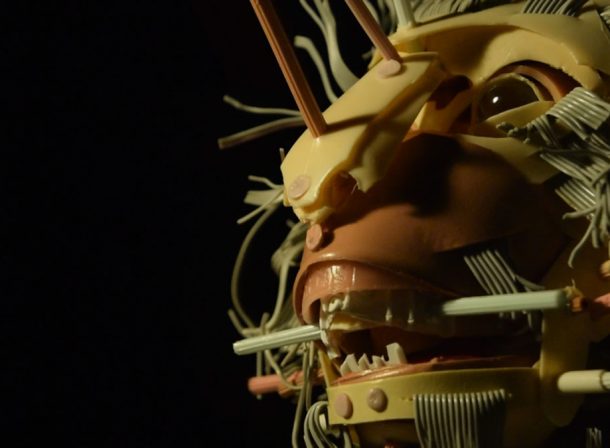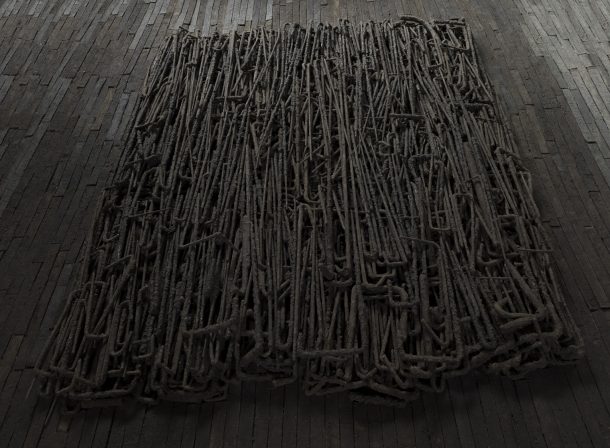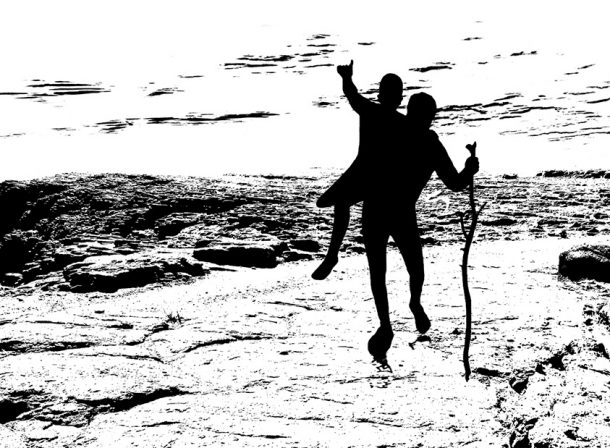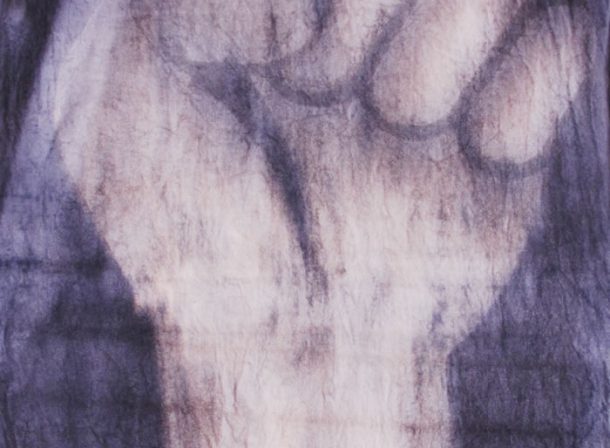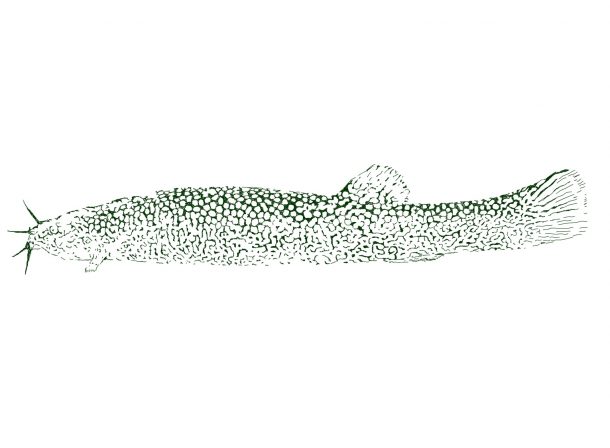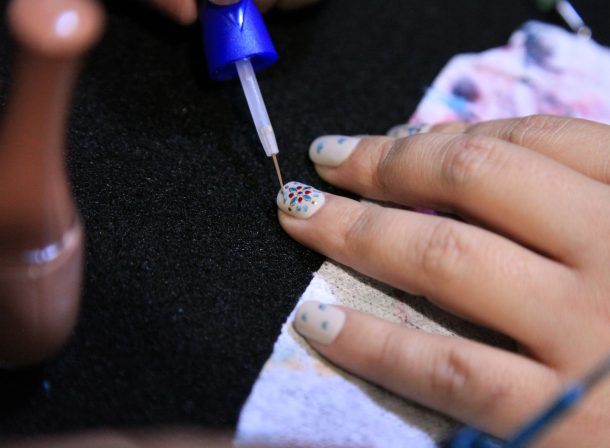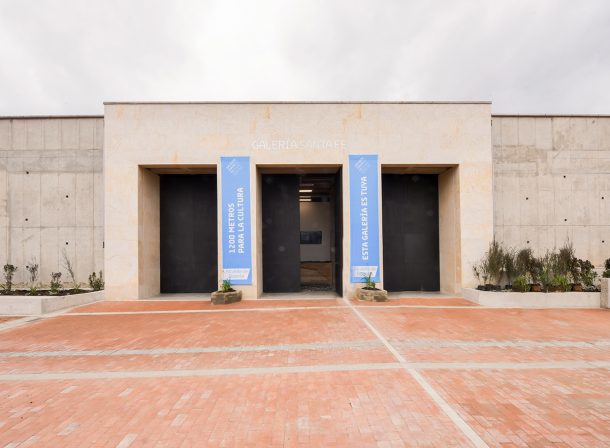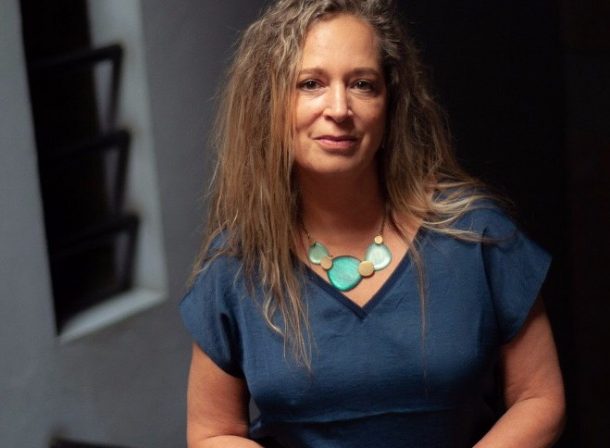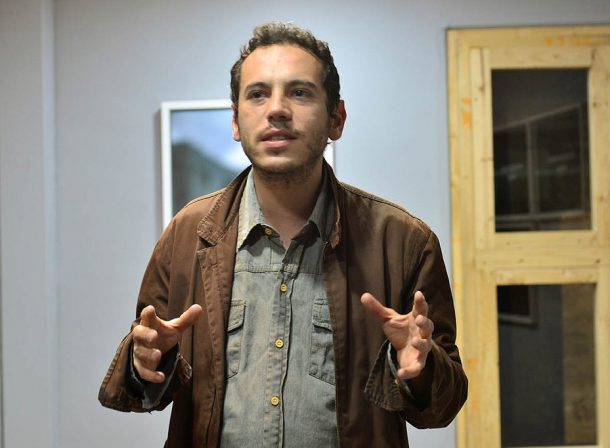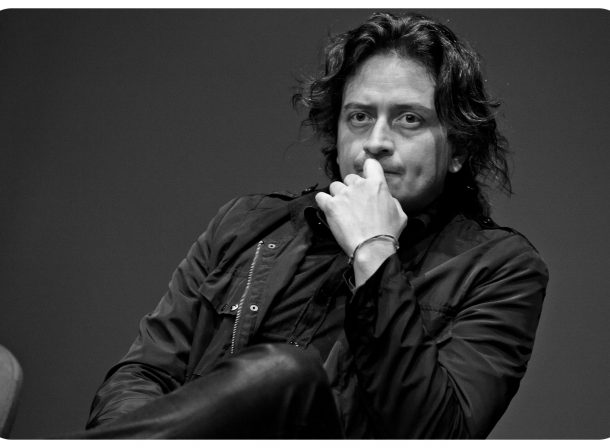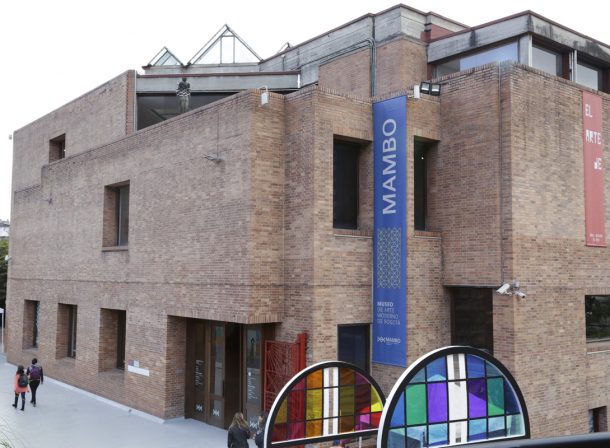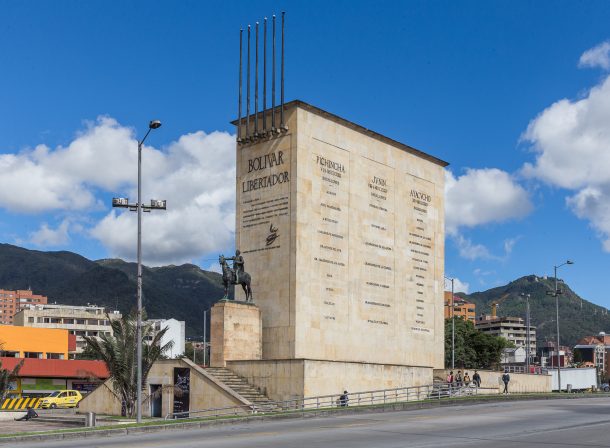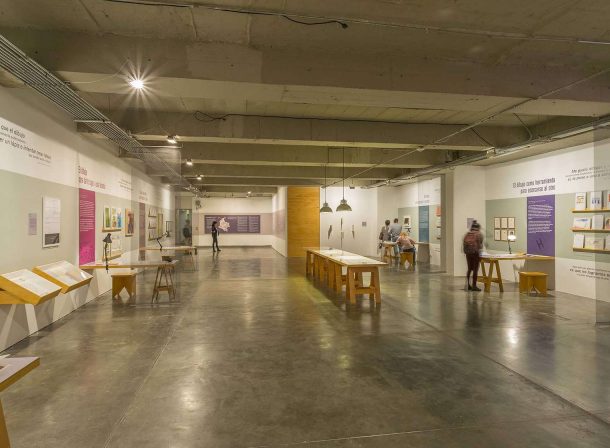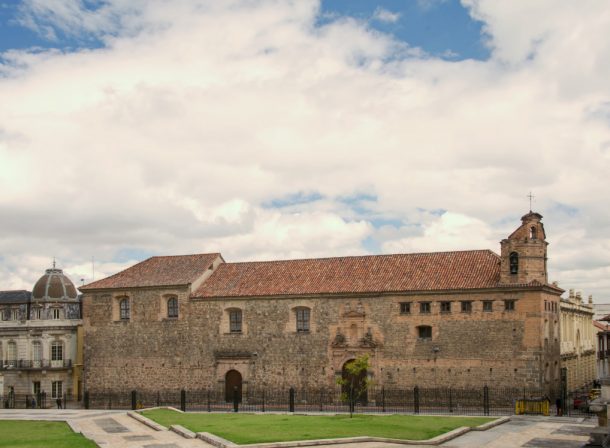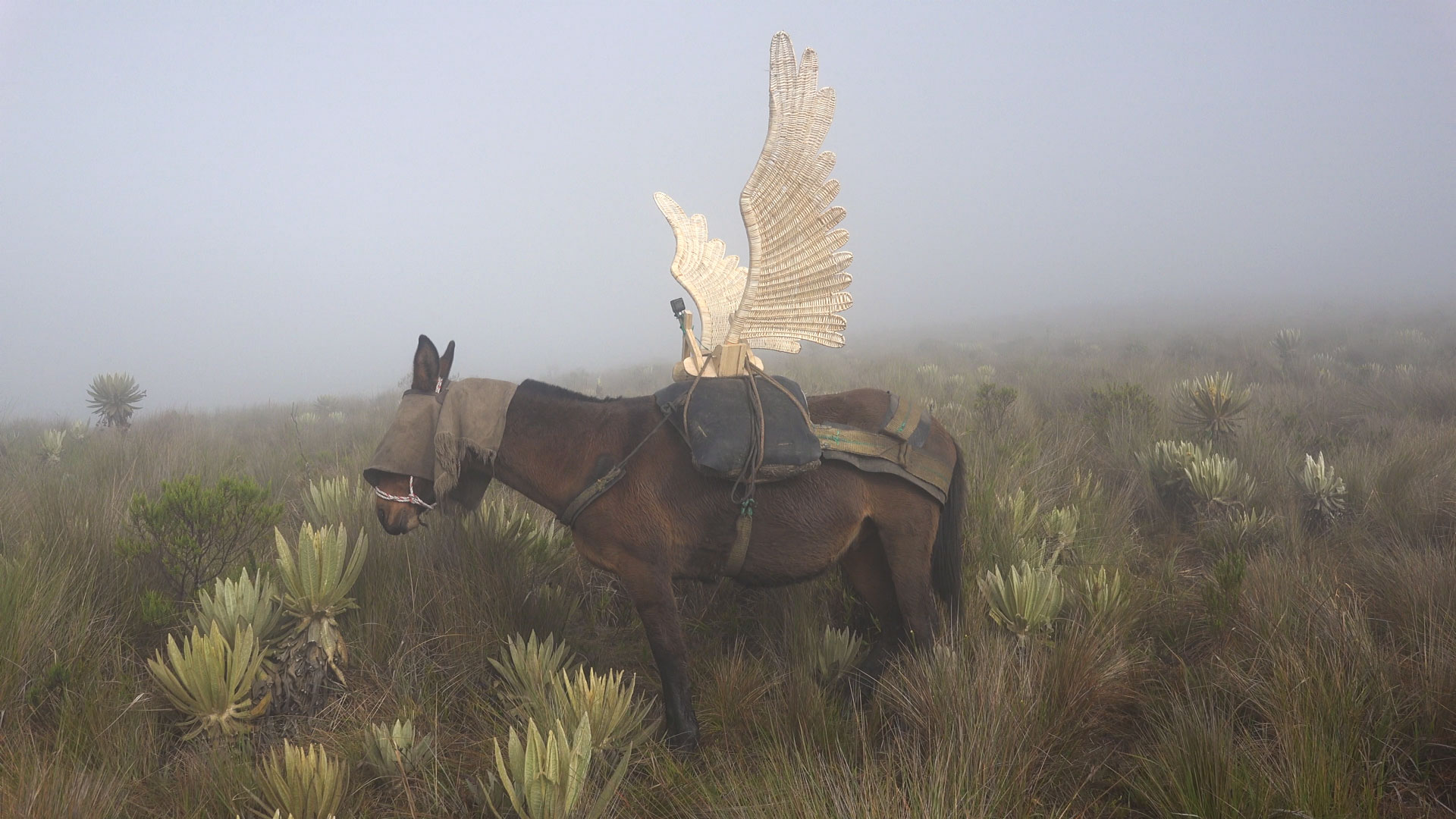
Fotografía: La Decanatura (Calderón & Piñeros)
De la mula al avión
“De la mula al avión” es el nombre propuesto para esta exposición instalativa que se busca realizar en el espacio “Monumento a los Héroes”. La frase parte de un boceto que Le Corbusier hiciera durante una visita a Colombia refiriéndose a la evolución del transporte en nuestro país, señalando y haciendo énfasis en el salto abrupto y la falta de transición en los métodos y formas de transporte en nuestro país. Se evidenciaba la falta de planeación y el choque brusco entre un país agrario y lo que supuestamente debía ser o “llegar a convertirse”, queriendo pasar rápidamente “de la mula al avión”.
La Decanatura – Elkin Calderón y Diego Piñeros
No debemos olvidar que inventar el barco implica el naufragio,
que inventar la locomotora implica su descarrilamiento,
que inventar el avión significa inventar su caída…
Paul Virilio
En uno de sus viajes a Bogotá, Le Corbusier dibujó un croquis que tituló “De la mula al avión”, en el que se refiere al paso repentino —sin ningún tipo de proceso intermedio— de un modo de transporte a otro. Tal como lo plantea el dibujo, Colombia saltó de la mula al avión dejando en el olvido la realización de otras formas de infraestructura.
El DC-3 voló por primera vez en Santa Mónica, California, en 1935, y se dice que fue revolucionario como avión de pasajeros y fundamental como medio de transporte durante la Segunda Guerra Mundial. Cuando llegó a Colombia en 1940, este avión se convirtió en uno de los símbolos del ingreso del país a la modernidad. El territorio dejó de recorrerse —a lomo de mula—, para convertirse en un espacio para ser visto desde el aire. Así, el proyecto moderno —como proceso de colonización—, con sus utopías futuristas y sueños de desarrollo perpetuo, se convirtió en el ideal de nación, y en su aplicación arrasó con todo aquello que no representara avance y progreso.
Hoy en día el DC-3 sigue operando en la Orinoquía y Amazonía, y aunque para el mundo de la aviación esta máquina ya es obsoleta, en estas regiones de Colombia resulta ser el único medio de conexión y transporte. Mientras que en Colombia estos aviones operan a fuerza de necesidad y contra todo tipo de riesgos, en otros países son reliquias, símbolos de glorias pasadas y artículos de lujo.
A lo largo del proyecto, y en un recorrido ascendente por el Monumento a los Héroes, el colectivo La Decanatura hace uso del DC-3 como una forma de poner en evidencia los contrastes entre Colombia y otros países en los que se encuentran estos aviones y de cuestionar el intento —y fracaso— del proyecto moderno, industrial y tecnológico por homogeneizar todas las formas de vida.
Una mula de mimbre contrasta con el imponente caballo de Bolívar y en lugar de mantenerse erguida, cae y se levanta continuamente. Otra mula se resiste a abordar un avión, y pareciera que, como el país, fue obligada a entrar dentro de un imaginario de nación al que tuvo que ajustarse contra su voluntad. En otro espacio, los escombros de aviones accidentados visitados por turistas y otros totalmente olvidados ponen en evidencia un sistema económico que crea y romantiza sus propias ruinas, y en el que el progreso y la catástrofe son uno y el mismo. Finalmente, una instalación a dos pantallas contrasta la precariedad y dificultad de los vuelos en el territorio colombiano frente al lujo y la abundancia que rodea a estos aviones en otros lugares.
Promocionar el progreso implica ocultar su realidad, referirse solamente a sus “beneficios” y esconder sus fallas técnicas, violencias, accidentes y disparidades. En este proyecto, La Decanatura revela, al mismo tiempo, tanto la capacidad destructiva de este ideal como su incapacidad para doblegar a todos los sujetos y territorios. La máquina que representaba la llegada de la modernidad es ahora un reflejo de su fracaso y de sus fallas y perversidades; pero, a la vez, representa los procesos de resistencia y autonomía de aquellos que se enfrentan al avance implacable del progreso.
Alejandra Sarria.
From the Mule to the Airplane
La Decanatura (Elkin Calderón Guevara and Diego Piñeros García)
We must not forget that the invention of the ship was also the invention of the shipwreck,
the invention of the locomotive was also the invention of its derailment,
the invention of the plane was also the invention of the plane crash…
Paul Virilio
On one of his trips to Bogotá, Le Corbusier drew a sketch that he named “De la mula al avión” (from the mule to the airplane) in which he refers to the sudden shift—without any kind of transitional process—from one mode of transport to another. As the drawing states, Colombia leaped from the mule to the plane, leaving behind and forgotten other forms of infrastructure.
The DC-3 flew for the first time in Santa Mónica, California in 1935. At that time it was a revolutionary passenger plane and key mode of transport during the Second World War. When it reached Colombia in 1940, this aircraft became a symbol representing the arrival of modernity to the country. Colombia transitioned from a land traversed by mule to a space to be seen from the air. In this way, the modern project—as a colonization process, with its futuristic utopias and dreams of perpetual development—became the ideal of the nation. In its implementation, anything that did not represent advancement and progress was done away with.
Today the DC-3 continues operating in the Orinoco and Amazon regions. Although this machine is now obsolete in the world of aviation, it is the only mode of connection and transport in these regions of Colombia. While these airplanes operate in Colombia out of necessity and despite all kinds of risks, in other countries they are only relics—symbols of past glory and luxury items.
Throughout the project and during a trip up to the los Héroes Monument in Bogotá, La Decanatura collective makes use of the DC-3 as a way to highlight the contrasts between Colombia and other countries where these airplanes are found, and questions the attempt—and failure—of the modern, industrial, and technological project to homogenize all ways of life.
A wicker mule contrasts with Bolívar’s impressive steed, and instead of staying upright, it continually falls and gets up again. Another mule refuses to board the aircraft and it seems that, like Colombia, it was forced to enter into the imaginary of a nation and adapt to it against its will. In another space, the rubble of plane crashes—some visited by tourists and others completely forgotten—show evidence of an economic system that creates and romanticises its own ruins, and in which progress and catastrophe are one and the same. Finally, an installation of two screens contrasts the precarity and difficulty of flights in parts of Colombia against the luxury and abundance that surrounds these airplanes in other places.
Promoting progress implies hiding its reality, referring only to its benefits and hiding its technical faults, violence, accidents, and disparities. In this project, La Decanatura simultaneously reveals both the destructive capacity of this ideal as well as its inability to subdue all of its subjects and territories. The machine that represented the arrival of modernity is now a reflection of its failure, faults, and evils. However, at the same time, it represents the processes of resistance and autonomy of those who face the relentless advance of progress.
Alejandra Sarria.
La Decanatura
La Decanatura como colectivo se ha interesado desde su inicio en cuestionar la idea de modernidad en Colombia, vista esta como un proyecto fallido e inconcluso, lleno de incongruencias, de historias desapercibidas o no contadas que normalmente la historia oficial no tiene en cuenta. Nos interesa entonces problematizar y generar dislocaciones y alteraciones que brinden nuevas lecturas de la realidad y de la historia reciente del país desde una mirada diagonal. A través de una metodología que incluye la revisión histórica, el viaje y el desplazamiento, nos arriesgamos a generar obras que a través de un lenguaje propio y evocativo, logren poner en tensión las temáticas que son de nuestro interés.
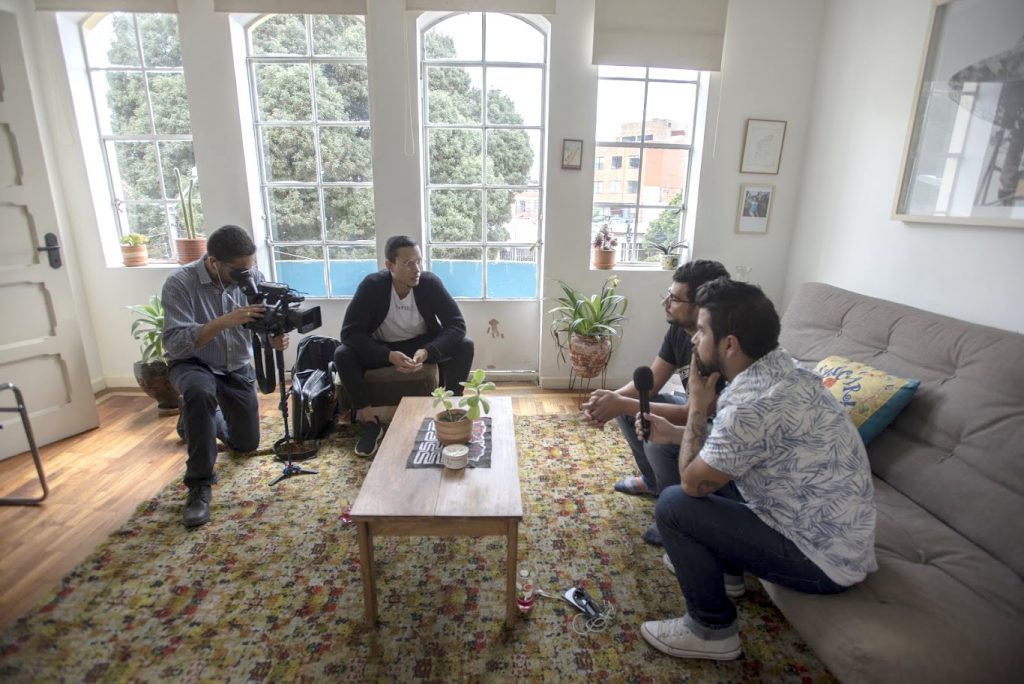
Tratamos de hacer señalamientos sobre símbolos, metáforas y dinámicas que evidencian estos tipos de procesos y resultados. Buscamos herramientas, indicios y testimonios gráficos que den cuenta del desarrollo de esta aparente evolución tecnológica y su relación con la naturaleza, su vulnerabilidad y su fragilidad.
La Decanatura viene trabajando en la creación de obra plástica desde el año 2014 y si bien sus integrantes (Elkin Calderón Guevara y Diego Piñeros García) poseen una carrera individual como artistas, con el colectivo se ha logrado establecer una mirada propia, una metodología clara y una forma de creación colectiva muy fructífera.
La Decanatura (Calderón & Piñeros)
La Decanatura is a collective made up of artists Elkin Calderón Guevara and Diego Piñeros García. La Decanatura collective has focused its work on displacement as a metaphor to connect with other realities, as well as to create ties with memory and the ruins of the past. Through audiovisuals, the collective has established poetics of time and space, playing with props and staging in order to document events, places, and objects, while producing discontinuity and alterations that lead to new perceptions of reality. Currently, La Decanatura is nominated for the 10th Luis Caballero Award.
Calderón & Piñeros were winners of Bogotá’s 5th Visual and Fine Arts Biennial (2018); finalists for the Han Nefkens Foundation-CAC Quito Award (2018); winners of the Villa Ruffieux / Pro-Helvetia Residency Program grant, 20th Contemporary Art Festival Sesc_Videobrasil (2017) and the poetics of time (2017).
They have participated in major exhibitions and festivals such as: MUNDOS ALTERNOS, Art and Science Fiction in the Americas, in the series Uchronias and Dystopian Futures: Latin American Science Fiction Cinema of the 21st Century, at the Queens Museum & Museum of Movement Image (MOMI), New York (2019); MACRO-ASILO (video of the day), Rome (2019); HERE / NOW: Current Visions from Colombia, Amsterdam (2019); Rencontres Internationales, Paris / Berlin (2018); 20th Contemporary Art Festival Sesc_Videobrasil, Sao Paulo (2017); Experiments in Cinema, New Mexico (2016) and Salón Nacional de Artistas de Colombia aún (2016).
They have held two individual exhibitions: Centro Espacial Satelital de Colombia, video cabinet, Carrillo Gil Art Museum, Mexico City (2018) and Caja Negra, Medellín Museum of Modern Art (MAMM, as per its Spanish acronym), 2017.
Their work is part of the collection of the KADIST Foundation (Paris / San Francisco), the art collections of Colombia’s Central Bank, and the collection of the Medellín Museum of Modern Art (MAMM), among others.
Elkin Calderón Guevara
Calderón graduated from the Universidad de los Andes and has a Master’s degree in Creative Documentary Cinema from the Universidad Autónoma de Barcelona (UAB) (Spain). He has developed a body of artwork using a variety of media and platforms: video, texts, interventions, and photography. He combines his artistic work with teaching in the areas of video art and experimental documentary. His work has been exhibited in various galleries, spaces, and festivals, such as the Jewish Museum in New York (2015), the Videonale de Bonn (2013), the Stenersen Museum in Oslo (2013), the AC Institute in New York (2011), and the Galerie Ratskeller in Berlin (2013), among others. He won the 2014 Creation Grant for Career Artists, awarded by Colombia’s Ministry of Culture. He has participated in the following artist residencies: Hawapi, Pondores (Colombia, 2018); Residence 2 Mares (France, 2015); Abubuya Residence, Kiosko (Bolivia, 2014); The Intricate Journey NGBK (Germany, 2007) and B3 and Arquest (England, 2005).
Diego Piñeros García
Piñeros studied art at the Universidad de los Andes. He has developed a body of artwork using a variety of media and platforms: video, painting, and installation art. His work has been exhibited in various galleries, spaces, and festivals in America, Europe, and Asia. He won the Creation Grant for Mid-Career Artists, awarded by Colombia’s Ministry of Culture (2015); the Bucaramanga Biennial DESDE AQUI (2015); and the 42nd Salón Nacional de Artes Visuales Award, at the Universidad de Antioquia’s National Culture Awards (2014). He was awarded 2nd place in the National Youth Art Contest, sponsored by Colsanitas and the Embassy of Spain (2013), and won the Gilberto Alzate Avendaño Foundation’s 4th Salón Nacional de Arte Bidimensional in 2009, among others. He has participated in the following artist residencies: Lilha (Mexico, 2017); Banasta (Colombia, 2010); and CASA 13 (Argentina, 2010).
En los pensamientos de La Decanatura
La Decanatura es el nombre del colectivo que une a dos artistas que compiten por el x Premio Luis Caballero. Sus integrantes hablaron del proyecto que desarrollarán para competir por este galardón de tipo bienal, que entregará la Alcaldía de Bogotá en 2019.
Daniel Grajales T.
Quisieron ser gestores culturales y se arrepintieron. Quisieron ser realizadores audiovisuales y lo objetual les puso en duda esa idea. Quisieron formar un colectivo con ideas de muchas más personas, pero se dieron cuenta de la falta de compromiso, rigor y calidad de algunos creadores. Elkin Calderón y Diego Piñeros integran el colectivo La Decanatura, nominado al X Premio Luis Caballero, galardón bienal que entregará en el 2020 el Instituto Distrital de las Artes-Idartes, a nombre de la Alcaldía de Bogotá.
De la mula al avión – La Decanatura – Premio Luis Caballero – Crítica sin cortes


